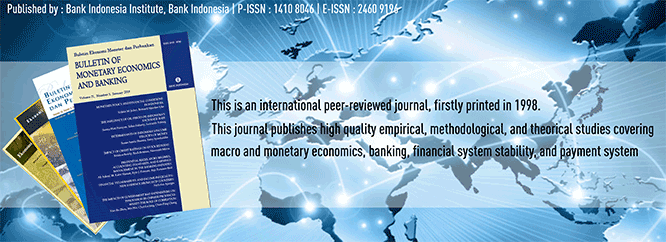
Document Type
Article
Abstract
There are two main competing theories to explain bank runs. One argues that panics come primarily from lack of confidence on banking sector, originated for example, in the bankruptcy of a big bank. According to this argument, lack of confidence and asymmetric information problems from depositors would induce contagious or self-fulfiling prophecy of bank runs. The other argues that banking crises are part of a cycle that effects both the financial and real sector of the economy. In other words, bank runs is determined by bank fundamentals and economic fundamentals.Using monthly panel data information on Indonesian banks this paper attemps to explain bank runs during the 1997/1998 financial crises. This papaer uses the variation of deposits as proxy for bank runs and the variables related to solvency theory and general economic condition as explanatory variables for bank fundamentals and economic fundamentals, respectively. To catch the contagion or self-fulfiling prophecy determinant of bank runs, I use dynamic panel data by imposing lag of deposit variations. The results shows that the impetus of bank runs during the crisis of 1997/1998 were the combination of contagion and bank fundamentals. However, economic fundamentals did not exert significant impact on bank runs. The finding suggest that the role of financial safety net, such as deposit insurance would be very important to keep depositors’ trust on Indonesian banking system, rather than preventing bank runs in the future.Keywords: Markow, bank runs, dynamic panel, IndonesiaJEL Classification: C33, E58, G21
Recommended Citation
Simorangkir, Iskandar
(2006)
"DETERMINAN BANK RUNS PADA KRISIS PERBANKAN 1997/1998: SUATU KAJIAN DENGAN MENGGUNAKAN PANEL DATA DINAMIS,"
Bulletin of Monetary Economics and Banking: Vol. 9:
No.
2, Article 5.
DOI: https://doi.org/10.21098/bemp.v9i2.201
Available at:
https://bulletin.bmeb-bi.org/bmeb/vol9/iss2/5
First Page
99
Last Page
143
Creative Commons License

This work is licensed under a Creative Commons Attribution-NonCommercial 4.0 International License
Country
Indonesia
Affiliation
Bank Indonesia

